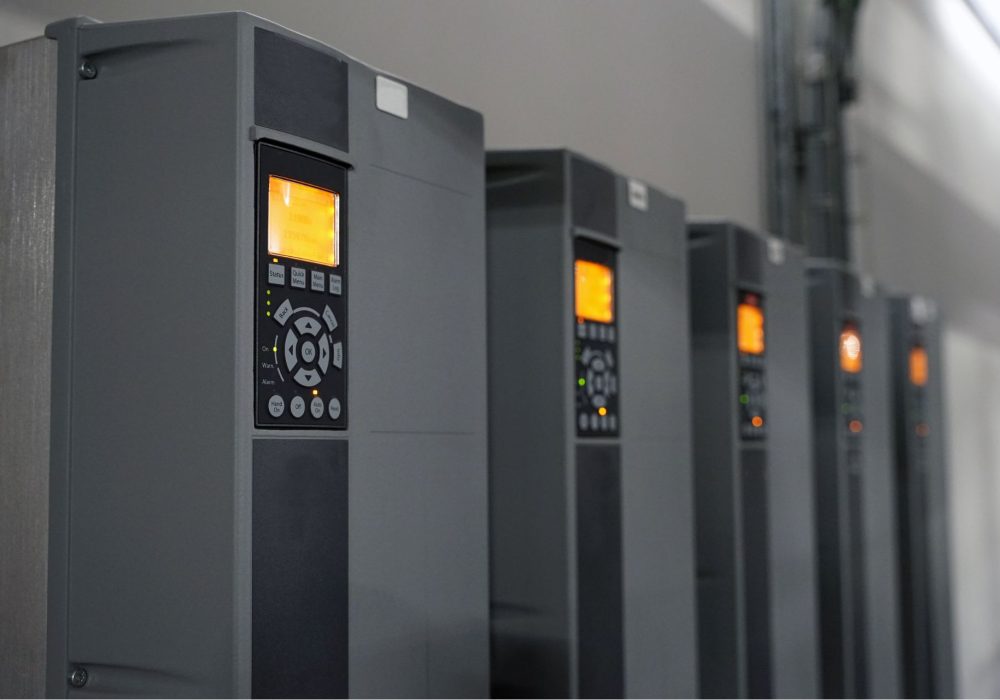How to Size Your UPS Correctly
- Home
- How to Size Your UPS Correctly
How to Size Your UPS Correctly
This guide will help you understand how to choose the right size for an Uninterruptible Power Supply (UPS). We’ll clarify the difference between Watts (W) and Volt-Amps (VA) to ensure you pick the right UPS for your needs. These terms are sometimes used interchangeably by UPS and equipment manufacturers, which can lead to confusion. Here, we’ll explain their differences and why they matter. For more help, feel free to reach out at sales@systemsupports.com.

Understanding Power Terms: Watts vs. Volt-Amps
- Watts (W): This is the actual power your equipment uses, also called “real power.” It’s important for understanding energy costs and heat generation.
- Volt-Amps (VA): This represents the “apparent power” and is the result of multiplying the voltage and current your equipment draws. It’s crucial for knowing what kind of wiring and circuit protection is needed.
In most cases, the VA rating will be equal to or greater than the Watt rating. The ratio of Watts to VA is known as the Power Factor. Knowing the power factor of your equipment can help in accurately sizing your UPS.
Need help with sizing? Send us your equipment’s total VA or Watts, or share a list of equipment part numbers, and we’ll assist you in finding the right UPS.
Different Types of Power Supplies
Your equipment’s power supply type affects its Watt and VA ratings:
- Power Factor Corrected (PFC) Supplies – Common in equipment made after the mid-1990s, these typically have Watt and VA ratings that are nearly the same.
- Capacitor Input Supplies – Often found in smaller devices like personal computers, these typically have a lower power factor (0.65 to 0.85), meaning the Watt rating will be less than the VA rating.
Knowing your equipment’s power factor will help avoid choosing an undersized or oversized UPS.
UPS Ratings: Watt and VA Limits
UPS systems have both Watt and VA limits. For many small UPS units, the Watt rating is about 60% of the VA rating, matching the power factor of typical computer loads. Some UPS units only list the VA rating, so it’s safe to assume that the Watt capacity is around 60% of the published VA.
Larger UPS systems often have equal Watt and VA ratings, especially for equipment that requires a power factor of 1.0. As manufacturers improve UPS efficiency, many models now list both the Watt and VA ratings, making it easier to choose the right size based on Watts.
Examples of Sizing Challenges
Example 1: A 1000VA UPS may seem like it can handle a 900W heater, but if the UPS’s Watt capacity is only 600W (60% of its VA), it won’t be able to power the load.
Example 2: A 1000VA UPS may also struggle with a 900VA file server with a PFC power supply if its Watt limit is only 600W, as this load would require the full 900W capacity.
These examples highlight the importance of checking both the Watt and VA requirements to avoid overloading your UPS.
Tips to Avoid Sizing Mistakes
Always verify both the Watt and VA requirements of your equipment. Many devices only list VA, which can make it tricky to determine Wattage. To stay on the safe side, choose a UPS with a VA rating that’s at least 60% higher than your equipment’s VA requirements. This approach can prevent overloads but may lead to a larger UPS than needed.
If you need more precise calculations, our experts can help you optimize your UPS selection and achieve the desired runtime.
